The third part in a series on the history of how we conquered the sound barrier. Written by Dale J Ferrier
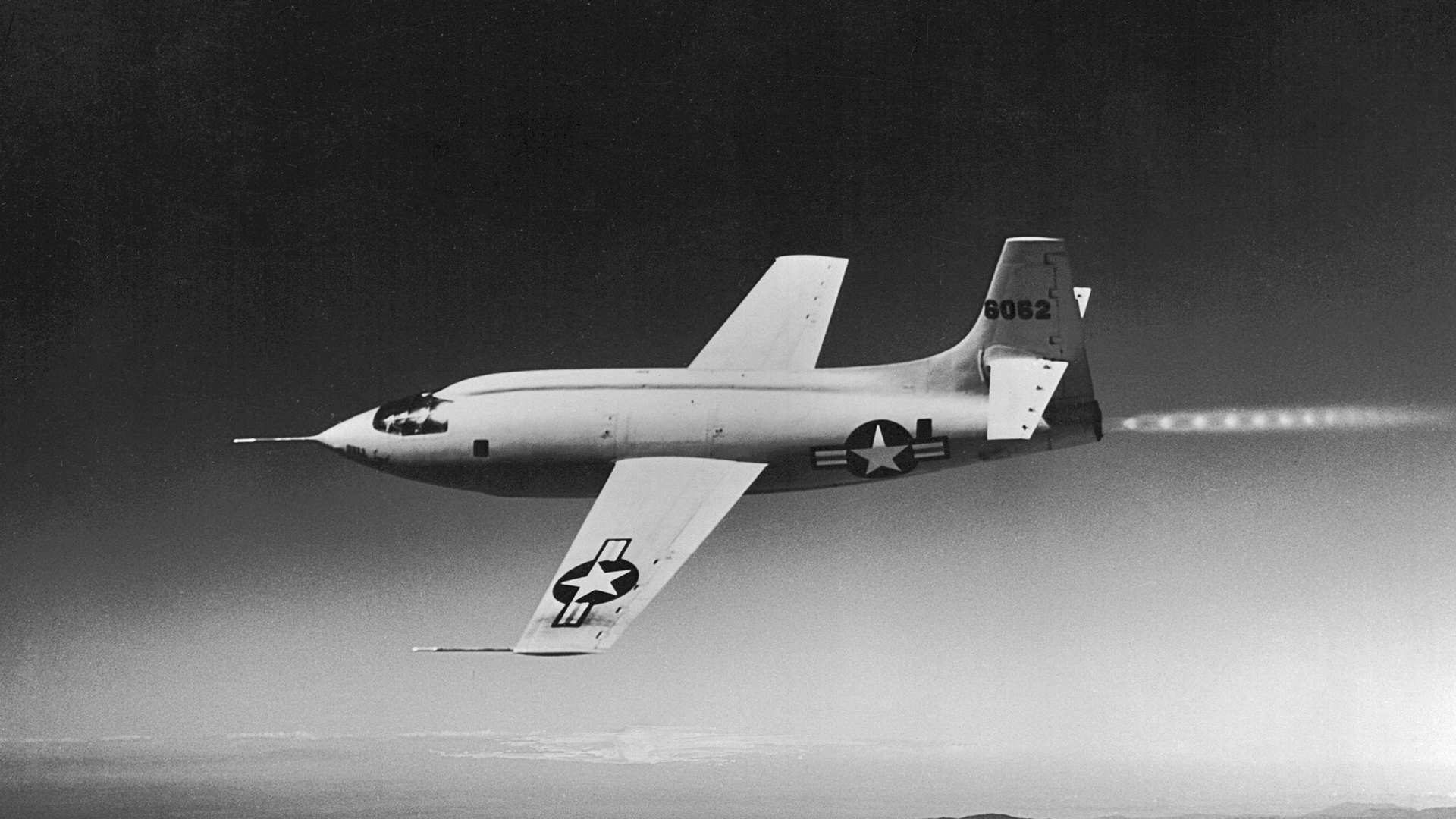
Touching the Barrier
Testing Goes Airborn
The work undertaken in the labs paved the way for achieving this holy grail of flight. But probably to the disappointment of many engineers, even by the late 1930s, aircraft remained far from reaching this incredible goal. Although much faster than those of the Great War, they had not yet reached the kind of speeds envisioned in the 1924 French report mentioned earlier.
This was not without effort to do so. In 1933, John Stack who had gained an acute understanding of the issues faced, proposed an experimental aircraft with wing chords going from 18% at the root, to only 9% at the tips. Fitted with an enormously powerful 2,300hp engine within an all-metal monoplane, it may have achieved around 525mph.
This is still much short of the elusive Mach 1, but air accelerated around the wings would exceed the Speed of Sound, providing Stack and his fellow aerodynamicists with valuable data. A sketch of Stack’s proposed design appeared in the inaugural January 1934 issue of the Journal of the Aeronautical Sciences and looked very much like a cartoonish version of the Bell X-1 a decade later.
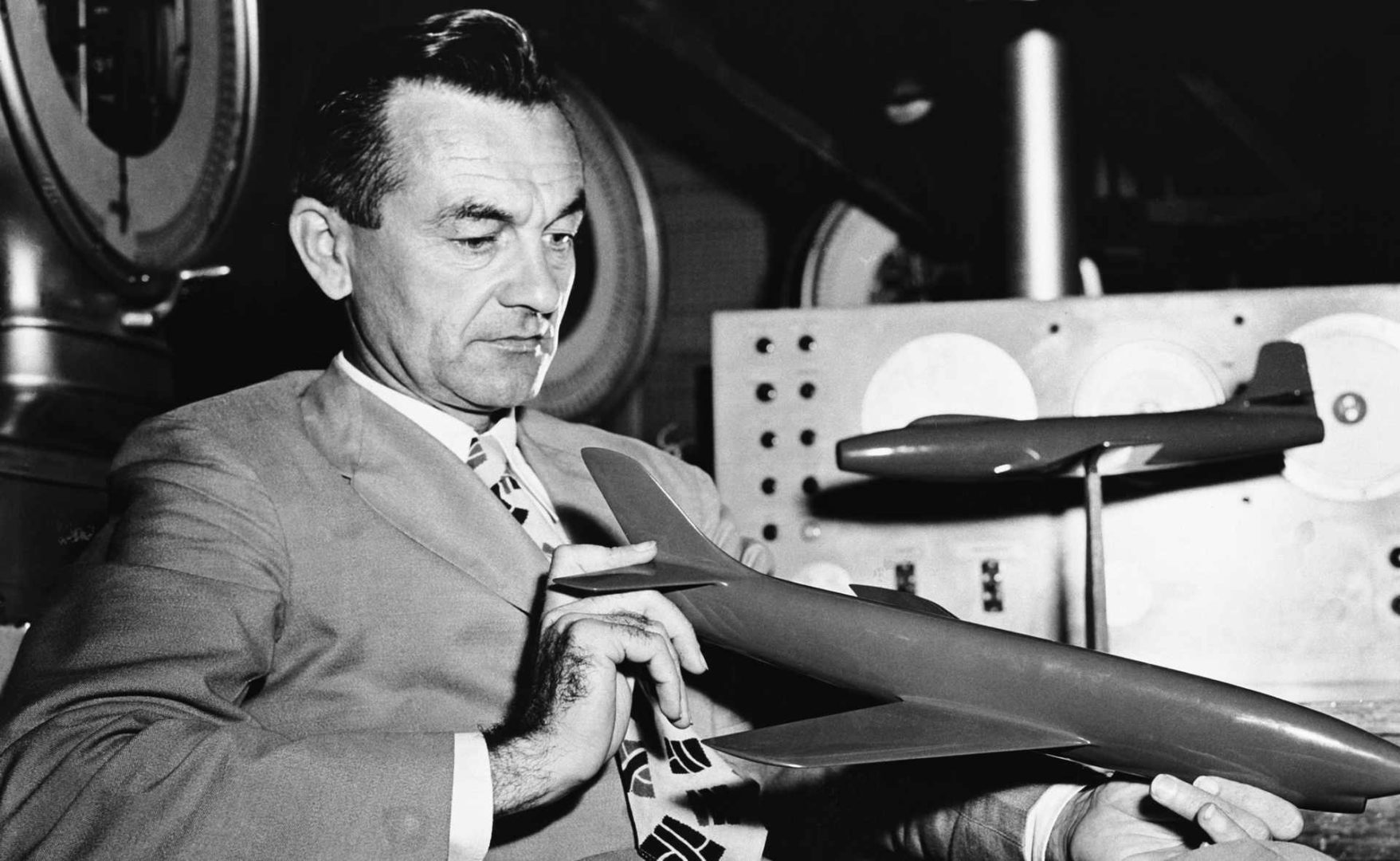
It wouldn’t be until 1940 that NACA’s research would transition into real-world flight when they were loaned several aircraft for use in high-speed test dives. By this time aircraft were becoming fast enough to reach their Critical Mach which became an exceedingly dangerous hazard for many pilots. But, thanks to NACA’s very careful planning, they never lost a single aircraft or pilot in these otherwise perilous flights.
The engineers behind these tests grew creative in their research methods by fitting small models to the gun bays of P-51s and dropping radar-tracked models from bombers, some fitted with rockets. However, these tests only produced quite limited data – certainly not worthwhile considering the risks involved.
Meanwhile, not all flights would go as smoothly as those done by the NACA. The late 1930s and into the 1940s saw aircraft with powerplants surpassing 1,000hp and using 3 or 4-bladed propellers that brought them ever nearer to reaching the precarious speeds of the transonic range and their Critical Mach. It became increasingly apparent during the 1930s that as engine power increased, conventional 2-bladed propellers would be rendered useless as they came up against the effects of supersonic flows around them as mentioned in an earlier section. Aero engineers sought to ‘distribute’ this extra power over more blades to keep the tip speeds down, avoiding the destructive effects of supersonic flows on their performance.
More than a few pilots would succumb to these dangers. In July 1937, the pilot of a Messerschmitt Bf109 crashed into Lake Muritz after losing control in a high-speed dive possibly due to reaching the aircraft’s Critical Mach – and he’d be far from its only victim.
Although capable of impressive speeds, these aircraft were not designed to counter the effects of their Critical Mach which not only placed enormous strain on the aircraft structure, but the formation of shock waves would make the control surfaces ineffective or very heavy to manipulate. The Japanese Mitsubishi Zero became infamous for becoming nearly uncontrollable at high speeds, much to the demise of many inexperienced pilots. These dangers not only affected axis designs. The American P38 Lightning was known for being difficult to pull out of a dive and killed test pilot Ralph Virde in a 1941 incident. Even the sleek Supermarine Spitfire, famous for her speed, wasn’t immune. Thanks to the torsional stiffness of its’ elliptical wings, reaching the Critical Mach caused the ailerons to act opposite as expected, in an effect known as control reversal.
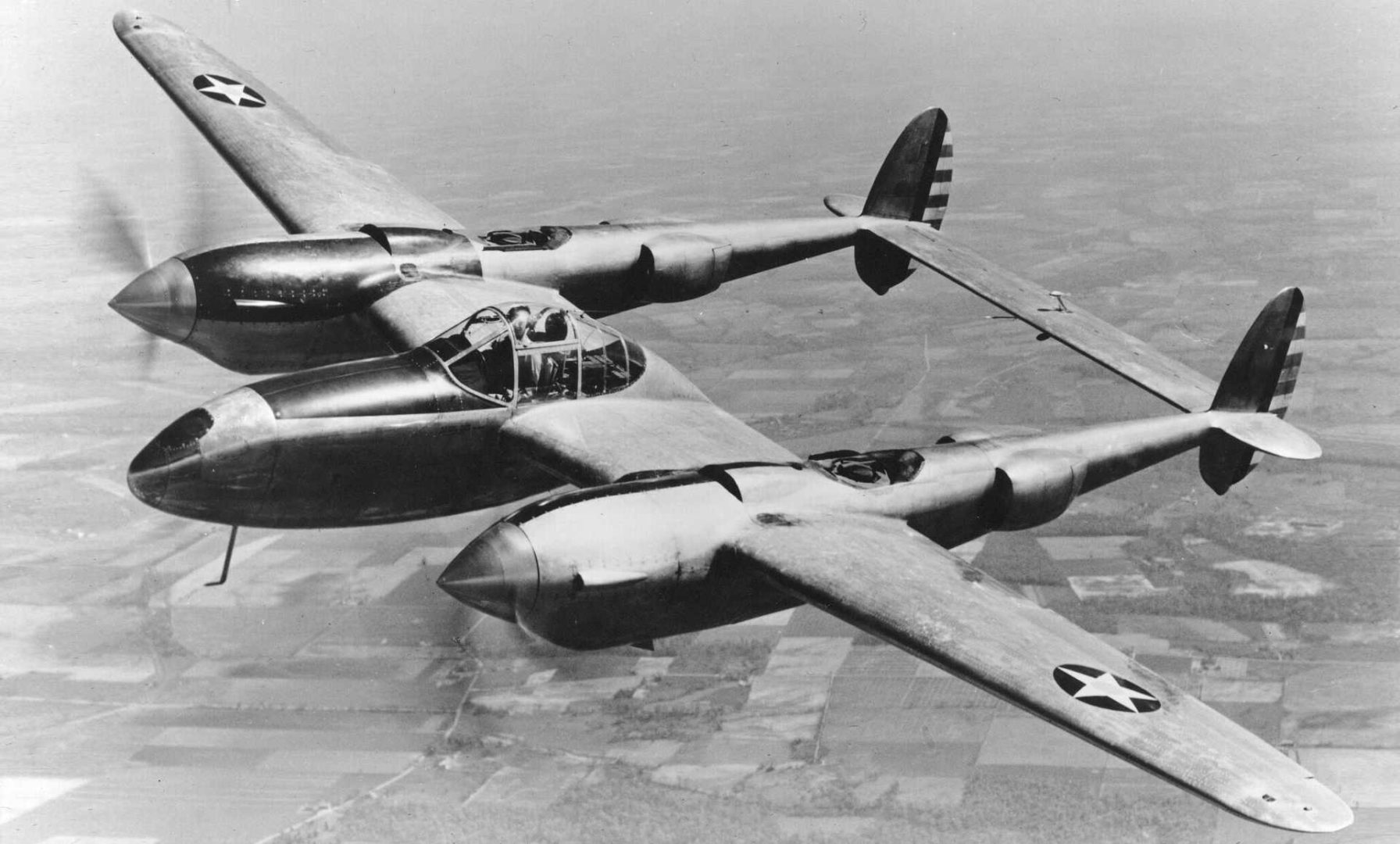
Despite the danger of flying at these speeds, it didn’t stop a few from trying, and the daring pilots who performed these flights often just about escaped with their lives. A P-51 Mustang pilot took his aircraft to Mach 0.85 causing some damage. But one of the highest recorded speeds for a propeller-driven aircraft occurred with a Supermarine Spitfire PR XI in which Squadron Leader J R Tobin reached a corrected true airspeed of 606mph in April 1944 while working for the Royal Aircraft Establishment. Then in another RAE test dive, Squadron Leader Anthony Martindale achieved a remarkable Mach 0.92. But this over-revved the engine, causing considerable damage, and Martindale only just managed to nurse his wounded Spitfire back to base.
It was quite apparent that aircraft designs had advanced enormously since their Great War predecessors and the breaking of the sound barrier was increasingly becoming the main obstacle to ever greater speed. In 1941, the pioneering Hungarian mathematician and aero engineer Theodore von Karman said that engineers were pounding hard on the closed door leading into the field of supersonic motion. Although designs had indeed greatly improved, engineers soon saw that propeller-driven aircraft would never feasibly exceed the Speed of Sound.
Any aircraft that hoped to achieve this must be propelled by some other method. Rockets did provide some promise, although their inherent dangers meant that this couldn’t be a long-term solution. It was around this time however that an invention did arise that showed hope of overcoming the propulsion issue – the jet.
The advent of the jet engine appeared to occur somewhat simultaneously in Britain and Germany with Frank Whittle and Hans von Ohain respectively. The jet, with its compressor-turbine design, meant it was less affected by supersonic flows than conventional propellers, and thanks to its superior method of producing thrust they needn’t be as large as comparably powerful piston-powered engines. It is then that jets would form a major cornerstone of future research into supersonic designs.
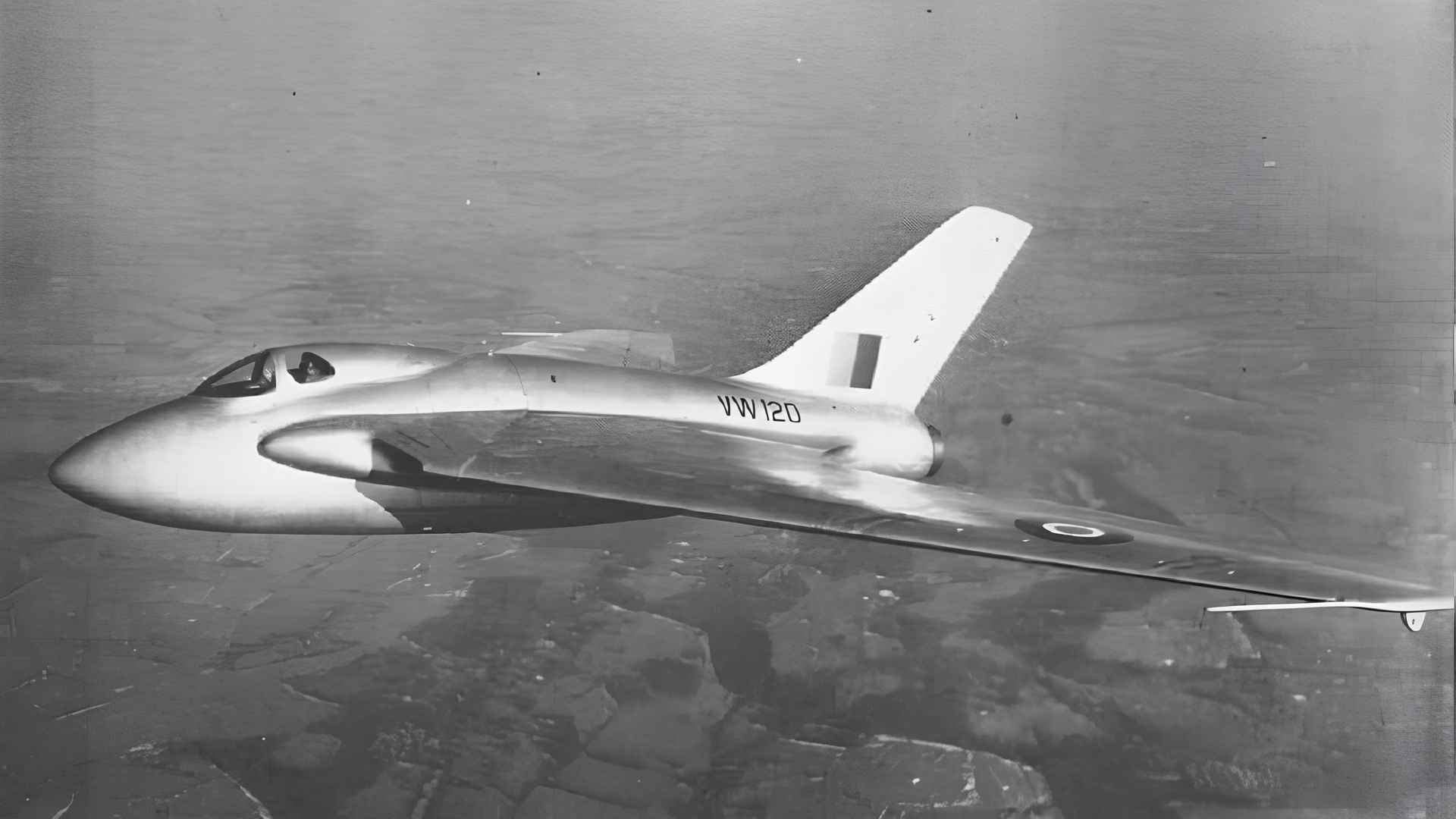
The Deadly Limit
Although the jet could provide the necessary power to reach and possibly exceed the Speed of Sound, it didn’t mean that the effects of transonic drag would vanish. This would be made clear quite tragically by DeHavilland and the ill-fated DH108 Swallow.
Built to Air Ministry specification E18/45 which called for an experimental jet aerodynamic testbed, the Swallow was launched in October 1945 and designed by John Carver Meadows Frost. It appeared to take inspiration from the German Me162 Komet using swept wings and no tailplane, albeit powered by a turbojet rather than a rocket motor. Initially, it was intended to assess swept wing designs in low and high subsonic speeds for the development of the Comet jetliner which at this point envisioned a tailless design.
Three Swallows were built, each varying slightly; TG283, TG306, and finally VW120. The first example, TG283, featured 43° swept wings and was intended for subsonic testing only. The second example, TG306 had 45° swept wings with automatic slots from Handley Page and the more powerful Goblin III turbojet. The third and final example, VW120, had the same wings as the second but had a more pointed nose cone, a lowered pilot seat to allow for a new cockpit canopy, and was powered by the yet more powerful Goblin IV. Both TG306 and VW120 were intended for testing up to the transonic range.
With the upcoming Comet airliner now featuring a tail, the trio of Swallows were put to work on researching transonic handling and the data they would provide now going towards the development of the DH110 Sea Vixen. TG283 was only capable of a rather pedestrian 280mph, but its other two stablemates could challenge the Speed of Sound, and TG306 would become the most well-known for quite sinister reasons.
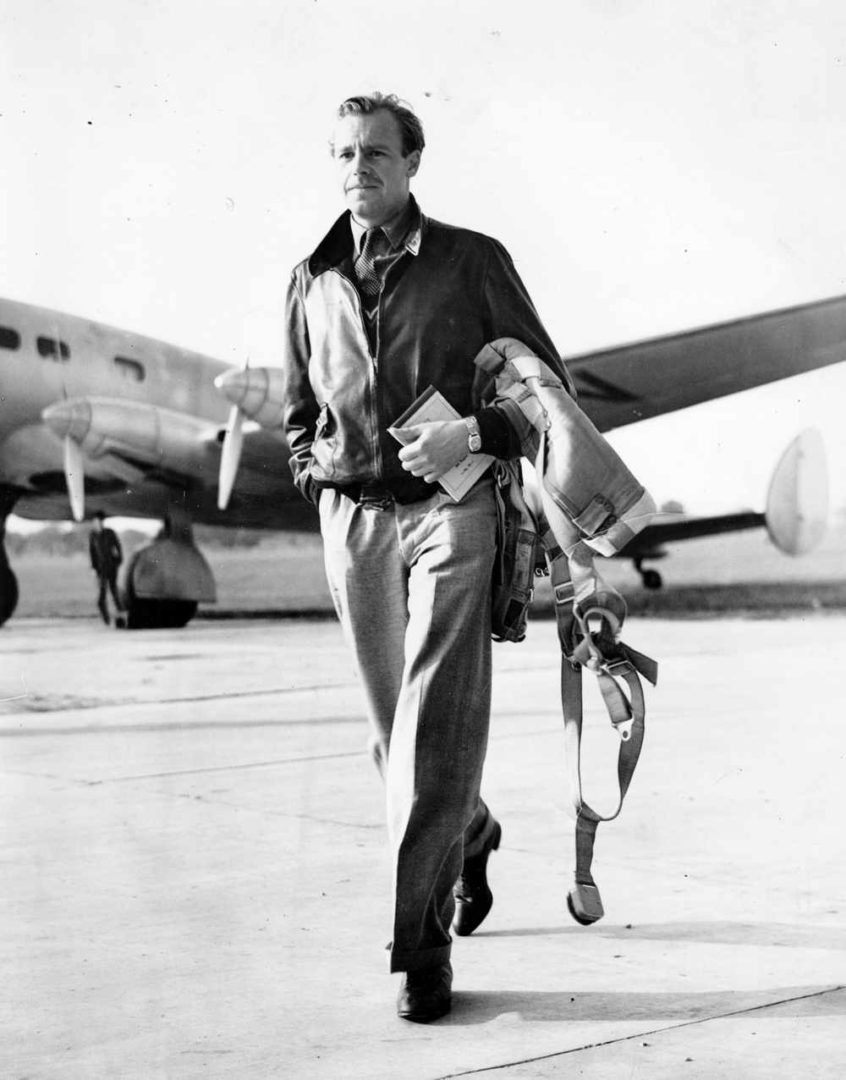
September 27th 1946 was a fine day and gave no indication as to what was about to happen. On the ground at DeHavilland’s Hatfield airfield sat TG306 with Geoffrey Raoul DeHavilland Jr, the son of the company’s founder, strapped into the cockpit. The Swallow took to the skies at 17:26 for what was planned to be a short 45-minute sortie. Climbing out to 10,000ft over the Thames Estuary, DeHavilland Jr began his high-speed dive and as he passed 5,000ft and Mach 0.88, it all went terribly wrong.
Shock waves began to form around the wing’s leading edges disrupting the airflow over them leading to a disastrous series of extremely violent pitching cycles. This placed tremendous stresses on the wing spars resulting in a crack forming. The Swallow simply disintegrated, plummeting straight into Egypt Bay at a very high speed. The mangled remains of the aircraft were found the following day, but the pilot took 10 days to be finally discovered. An autopsy on his remains showed that he had a broken neck and a skull fracture, likely from the aggressive oscillations he experienced.
In the October 1946 issue of Flight and Aircraft Engineer, it said:
“Geoffrey DeHavilland was one of the outstanding test pilots in the country…his death is a serious blow not only to the company but to the country, for in the exploration of the unknown threshold of sonic flight, a combination of skill and cool courage are qualities demanding the utmost of test pilots. Geoffrey DeHavilland had these qualities in a very high degree.”
Another great test pilot of the age in 1949 flew the similar VW120 to assess what had happened. Eric ‘Winkle’ Brown put his Swallow in a series of high-speed dives. Initially starting from 35,000ft and then another from 45,000ft, he experienced no problems and reached Mach 0.985. It was only when he flew down at a similar altitude as the ill-fated TG306 that Brown encountered the same lethal oscillations that killed DeHavilland Jr. In his 2006 book, Wings on My Sleeve, he recalled what happened:
“The ride was smooth, then suddenly it all went to pieces. As the plane porpoised wildly my chin hit my chest, jerked hard back, slammed forward again, repeated it over and over, flogged by the awful whipping of the plane.”
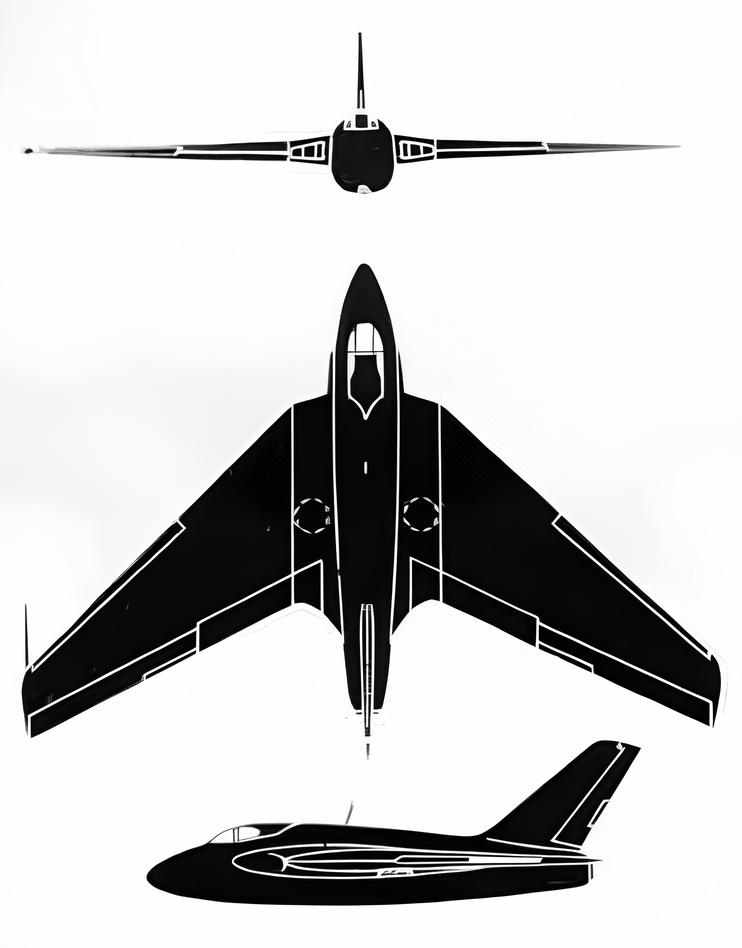
Brown knew that this porpoising destroyed TG306, and not wishing for the same end, he ran a procedure he’d practised before. He progressively pulled back on both the elevators and the throttle to which the oscillation ceased as suddenly as it appeared. Brown believed that he only survived because of his shorter stature and that DeHavilland Jr probably struck his head on the canopy knocking him unconscious.
The DH108 did however achieve the first British supersonic flight when John Derry inadvertently took VW120 past Mach 1 during a dive on September 6th 1948, himself only escaping death by the skin of his teeth. None of the three DH108s built survived with all being destroyed in crashes. VW120 entered a dive on February 15th 1950 and the oscillations returned.
Unfortunately, this time the port wing separated, killing test pilot Squadron Leader Stuart Muller-Rowland, who similar to DeHavilland Jr, suffered a broken neck. Even the slower TG283 met a terrible end only months later on May 1st when it entered an inverted spin for which its pilot, Squadron Leader George E C Genders, could not recover. Genders did manage to bail out, but his parachute failed to open. Eric Brown described the Swallow as a “killer”.
Meanwhile, the Soviet Union were conducting their own test flights to break the sound barrier. The Lavochkin La176 was a derivative of the La168, which itself was a descendant of the La150, an early Soviet jet that utilised a great deal of captured German technology as the Second World War drew to a close. Powered by a Klimov VK-1 centrifugal flow turbojet which was a reversed-engineered Rolls Royce Nene produced at Factory No.45 in Moscow, it featured 45° swept wings on top of the fuselage and a T-tail. Only one La176 was built.
On December 26th 1948, the La176 flew by Ivan Evgrafovich Federov dived from 30,000ft and exceeded Mach 1. Initially, this speed was dismissed as an airspeed indicator malfunction, but more test dives during the following January seemed to confirm the Boxing Day flight when Federov achieved Mach 1.02. Unfortunately, the single La176 crashed on a later test flight when its canopy failed killing test pilot I V Sokolovsky.
Despite their deadly ends, the DH108 Swallow and the Lavochkin La176 showed that a jet-powered aircraft could indeed exceed the sound barrier. But before jet engines were developed, engineers looked to rockets to provide the necessary power and an early design of a rocket-driven supersonic aircraft came ironically from one of aviation’s slower species – the glider.
End of Part III



